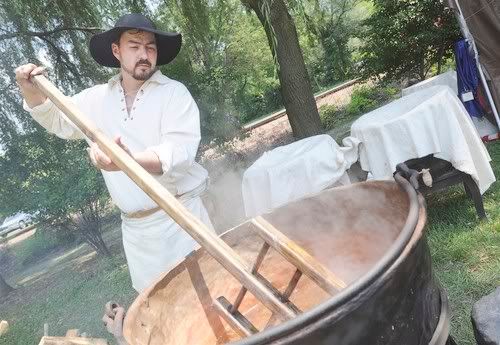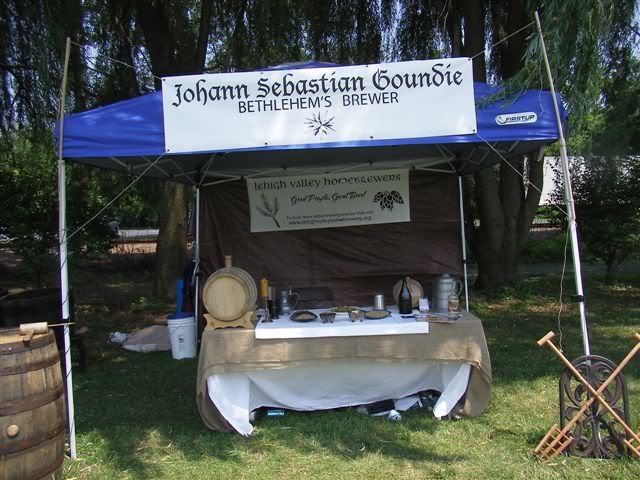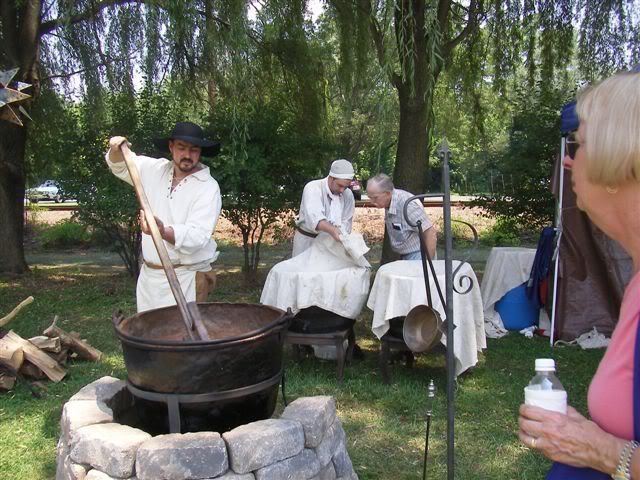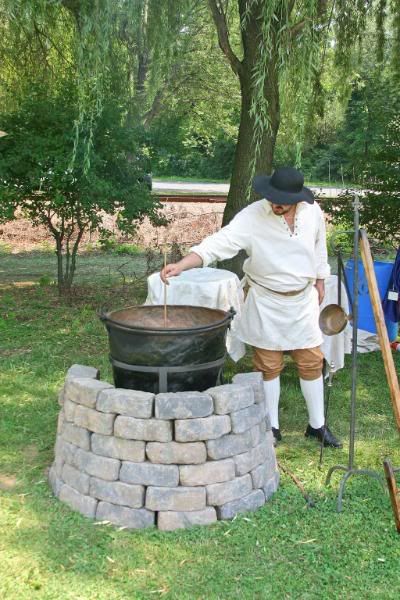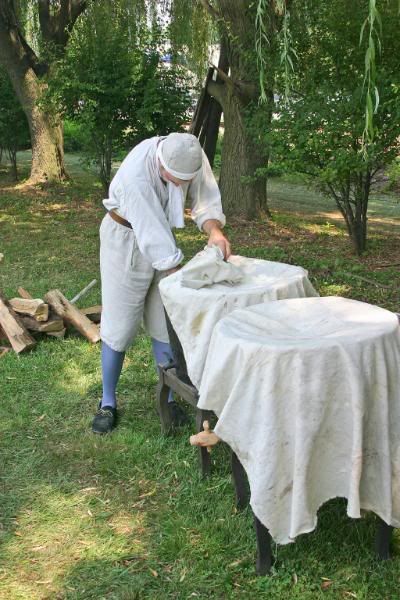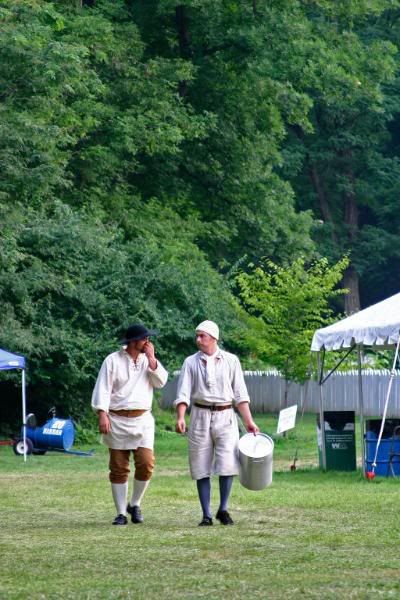mrbowenz
Well-Known Member
As I just finished my Savant Systems 1400, which is fairly state-of -the -art,I am heading the other direction back in time and
I got a gig that I thought I would share:
The town I live in, Bethlehem PA, is an old Moravian Community est. 1741, as it turns out, One of the most influential characters from their history was a German Moravian named Johann Sebastian Goundie. Goundie was Bethlehem's first celebrated brewer and an interesting character.I was asked by the city to portray this guy for one of the many festivals Bethlehem has. I have put together a new/old brewing system from around 1800 or so . This weekend with the help of , HBT member " BobNQ3X ", we are brewing two batches of historical beer as a demonstration in period clothes and on some homemade historical equipment. I was able to score an old copper 50 gallon kettle from a farmer whose great grandfather had brought to PA from France in 1800. Then I built a iron stand to hold it and cut an old whiskey barrel in half for a mash tun and liquor tank.
I also built a mash rake and some other items, distressed and tried to make look old and somewhat accurate. This gig should be pretty fun, albiet fairly challenging to produce good quality beer. I can post some pictures after this weekend of our event. Those near the Bethlehem area can check us out at :
http://www.historicbethlehem.org/events/blueberry-festival/
Heres a picture of the old kettle, never mind the glamour kitty, Goundie didn't make beer out of kittys
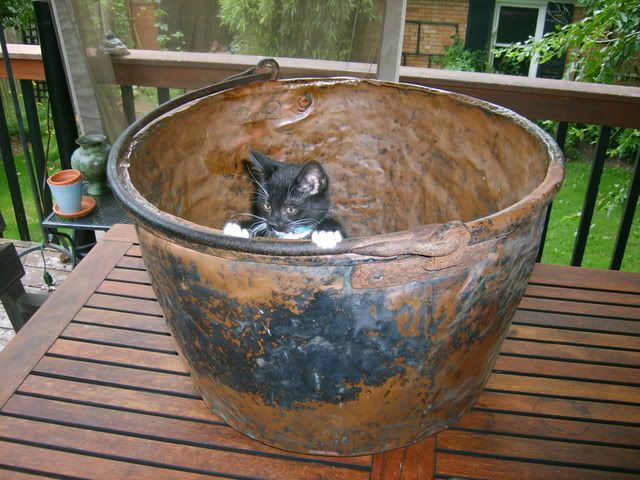
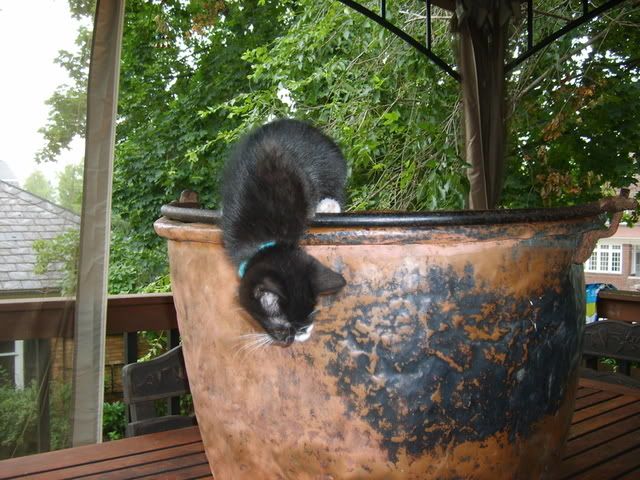
I got a gig that I thought I would share:
The town I live in, Bethlehem PA, is an old Moravian Community est. 1741, as it turns out, One of the most influential characters from their history was a German Moravian named Johann Sebastian Goundie. Goundie was Bethlehem's first celebrated brewer and an interesting character.I was asked by the city to portray this guy for one of the many festivals Bethlehem has. I have put together a new/old brewing system from around 1800 or so . This weekend with the help of , HBT member " BobNQ3X ", we are brewing two batches of historical beer as a demonstration in period clothes and on some homemade historical equipment. I was able to score an old copper 50 gallon kettle from a farmer whose great grandfather had brought to PA from France in 1800. Then I built a iron stand to hold it and cut an old whiskey barrel in half for a mash tun and liquor tank.
I also built a mash rake and some other items, distressed and tried to make look old and somewhat accurate. This gig should be pretty fun, albiet fairly challenging to produce good quality beer. I can post some pictures after this weekend of our event. Those near the Bethlehem area can check us out at :
http://www.historicbethlehem.org/events/blueberry-festival/
Heres a picture of the old kettle, never mind the glamour kitty, Goundie didn't make beer out of kittys





